What is a User Conference?
P.G.B. Morriss said it most eloquently in his classic book, How to Plan a Convention, published in 1925, defining conventions (conferences) as, “the most effective means of disseminating information on the progress of any particular industry or field of endeavor.”
He also cites the reasons for holding a meeting or convention: to impart or exchange business information, to foster personal acquaintanceships within an organization, and to contribute new ideas for the future betterment of an industry.
I could not have provided a more apt definition almost a century later! Corporations and associations the world over continue to host meetings, conventions, and conferences for these same reasons.
What makes a User Conference a “User” Conference?
While many companies hold meetings for their internal staff to disseminate directives or knowledge from management, other companies or associations hold what is called “user conferences” to pass knowledge and best practices down to their customers or members who use their products and services. Attendance varies anywhere from 200 – 20,000 based on the offerings of the hosting company.
For example, many software companies offer “user conferences” to bring together their technical experts to provide extensive educational learning experiences to teach their customers how to maximize the potential of their product.
Almost always, there is a tradeshow or expo component, so partners who offer complementary solutions to the specific industry can showcase the latest and most up-to-date offerings of new products and services. It is also a fabulous opportunity for the hosting company’s sales force to be in front of hundreds or thousands of customers to sell upgraded solutions to customers who may have a previous or older version of their product.
We have a client who, in addition to a tradeshow, also sets up a Customer Learning Lab on the tradeshow floor. The Customer Learning Lab is staffed with technical experts who are set up with a computer for each of their software solutions offered. Customers can then sit one-on-one with an expert and learn how to utilize their software to glean every last drop of capability from it to make their businesses run smoothly and more efficiently.
Another significant aspect of holding a user conference is that attendees love networking with other business owners. They’re able to discuss and share the unique ways they have learned to use the software and have a chance to bounce ideas off one another. By sharing these best practices, they often come away with brilliant ideas to improve their businesses and are very energized and excited to institute what they have learned!
1. Financial Considerations
The financial model for user conferences is typically expected to be a “break-even”, meaning their revenue equals expenses. They usually aren’t having the user conference to generate profit. The return on investment is building loyal customer relationships to keep them using their services. Ultimately, the sales generated during the conference have a measurable and valuable financial impact even after the user conference.
Now, if the type of organization is an association where they hold conferences for their membership, they typically have the financial model of it being profitable, where the revenue exceeds expenses. As a past director of events for a national association, the revenue that the annual convention generated was a large allocation of the year’s operating expenses, so the convention needed to be hugely successful and profitable. The money raised during the convention was used to educate their members and state affiliates throughout the rest of the fiscal year, so the pressure was on for us all to ensure it was a success!
If an organization has never conducted a user conference before, they will need to start with a zero-based budget, which is one where there is no existing history or budget. If they have had a user conference before, they can use the incremental budget or the current budget, and adjust with the new information such as the hotel’s actual costs for staff rooms, staff airfare, staff meals, food and beverage, expo decorator costs, audiovisual costs, load in/load out fees, marketing and advertising costs, postage, supplies, program management fees, printers, copiers, registration system, security, awards, VIP or speaker gifts, etc. These costs can either be fixed or variable as to the number of attendees. Do not forget service charges and taxes in these necessary calculations!
For this type of conference, you will need to show revenue generation at the top of the budget. You will often update the budget with the following revenue streams (which are the norm for user conferences): registration fees or the amount payable for attendance at a conference, exhibit sales (which your vendor will pay you for their booths for the opportunity to be in front of your attendees), additional exhibitor registration fees (apart from the complimentary ones as part of their booth package), sponsorship sales or donated financial or material support, (usually in exchange for recognition and/or the opportunity to increase its visibility at the meeting). I wrote a previous blog post on sponsorships that can help guide you to maximizing your conference’s earning potential. You will need to calculate how much you will charge attendees for your registration fees, how much for your booth space, sponsorship offerings, and room blocks for your internal staff and attendees.
Once you build your projected budget, you will then need to calculate how much registration and exhibit sales, as well as sponsorship revenue, must be generated to cover the expenses of holding this conference. If it is your company’s first year of doing this, the goal I have found to be true is to hope for 20% of your total customer or member base to attend, but project that only 10% will attend. Your company also needs to consider the financial risks they are willing to take in case projected numbers do not come to fruition, and the company needs to absorb expenses not covered by the projected revenue.
To do this, you must put some effort into researching how many customers you have for each product to determine how many attendees you project from each vertical. Research what other companies in your industry are doing: how much do they charge for attendees for their conferences you know are successful, how much do they charge for exhibit/booth space, what are their sponsorship offerings?
You can then estimate a grid similar to this:
| Customers | $850 | 950 | $595,000 |
| Guests | $200 | 150 | $30,000 |
| Exhibit Sales | $3,500 10'x10' booth | 60 | $210,000 |
| Sponsorships | $250,000 | ||
| $1,085,000 |
You will need to monitor the expenses versus revenue often and closely to ensure you meet your financial goal, whether it be profit or break-even, and adjust your offerings if your revenue is or isn’t meeting expected goals.
2. Educational Consideration
For a user conference, offering extraordinarily relevant and highly educational training classes is one of the most critical areas of this type of conference. If you do not offer a strong schedule, you won’t attract the numbers of attendees/customers you had hoped. Most companies have an internal committee comprised of their director of education or training who is spearheading the gathering and compiling of all the session titles, session descriptions, and speaker biographies and photos.
They will work with internal experts (developers, programmers, solutions) to create unique content for their specific solutions and services to attract customers who use that product. Remember, many of these attendees are from small businesses, and you must provide them with compelling reasons for them to be away. I cannot convey the importance of a robust educational training agenda for the success of a user conference.
3. Marketing Consideration
Marketing communications are often the most over-looked line item of any meeting planning budget but are crucial to attracting attendees. Once you’ve taken the steps above and have created an agenda, you’ll need to come up with a clear and actionable marketing and communications plan. Be sure to market the plan through many different partners, as well as your verticals, and speakers, with specific messaging for each partner.
Utilize a combination of email blasts, the conference website, and direct mail pieces to reach your prospective attendees. It’s difficult to cut through the clutter of today’s overburdened email inbox, so the more avenues you can effectively communicate through will increase your user conference’s registration rate!
4. Hotel & Meeting Space Consideration
User conferences tend to offer many different concurrent training sessions over the course of a day, day and a half, or two days, so they need a pretty large amount of meeting space and breakout rooms. We recently assisted a client with a user conference that offered 165 breakout education sessions, using 28 rooms across five different floors! A user conference also requires a large room for a general session and a meal space, as well as another large space for a tradeshow/ expo.
Another essential thing to consider is creating times and areas where attendees can network, such as a welcome reception to kick off the conference. Plan it so you can also market it and build excitement around it so the attendees can’t wait for the event! I love to provide an experiential event built around the “flavor” of the city in which we are holding the conference.
There are many facets of planning a user conference, and I could go on and on! If you are thinking about hosting a user conference but don’t know where to start, let Brightspot assist! We are ready and happy to partner with you. In the meantime, head over to our events page to see how we can make your next user conference the bright spot of your company.



